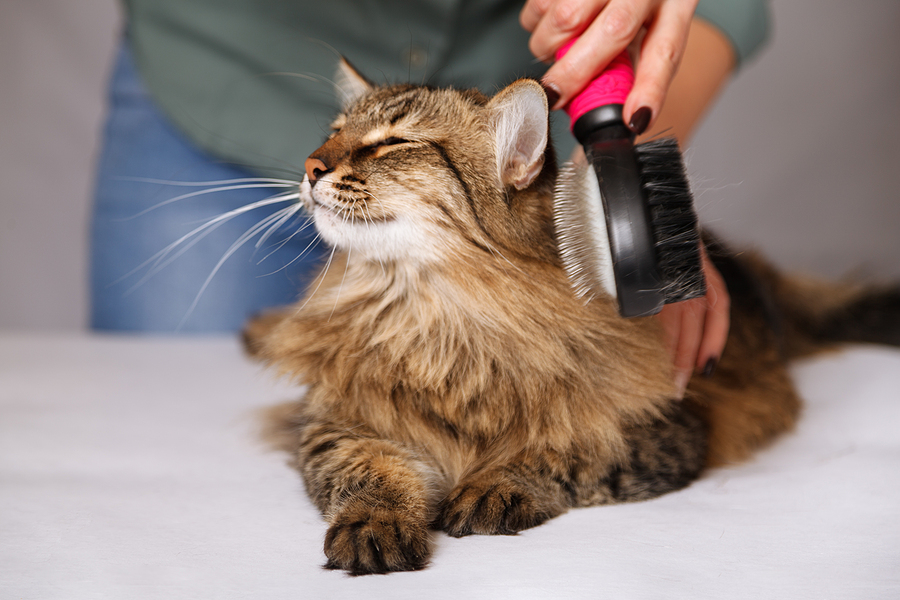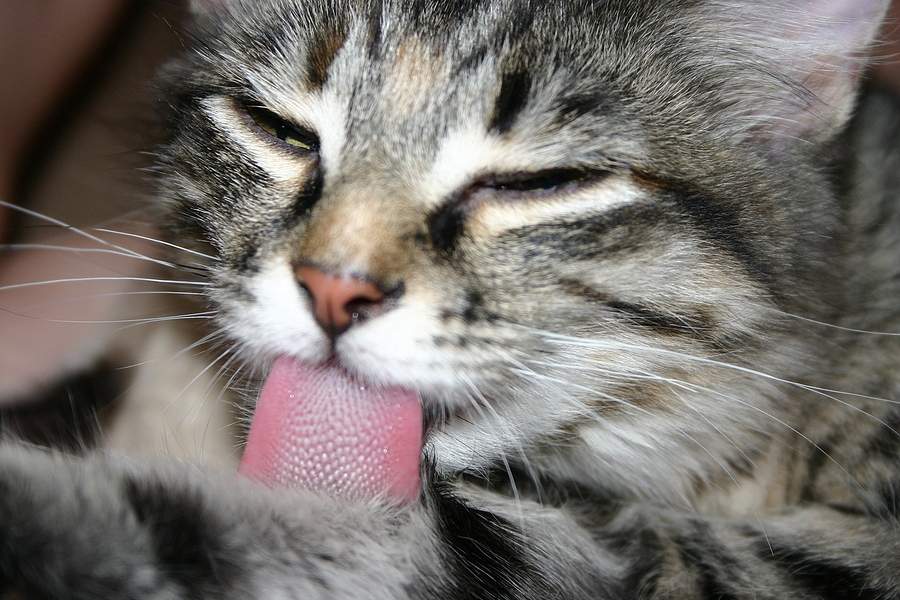I remember a cat-loving friend telling me once that her cat Bradshaw had vomited a hairball. There was something off about the hairball – perhaps it was the appearance, or texture — that made my friend investigate further. She smelled the hairball, and it had a uniquely foul odor. My friend rushed her cat to the veterinarian, on a gut instinct. It turned out that Bradshaw had swallowed a thread and needle, and he required emergency surgery. Fortunately, he recovered completely.
Should you be concerned if your cat is vomiting hairballs? And are certain types of hairballs indicative of more investigation or a trip to your veterinarian? Here’s what to know.
What Is a Hairball?
According to Sarah Wooten, DVM, staff veterinarian at Pumpkin Pet Insurance, cats groom, swallow, and digest small amounts of hair daily. Hairballs occur when cats swallow more hair than normal. The excess hair irritates the cat’s stomach and causes the cat to vomit the hairball, which usually looks like a wet cigar with hair, saliva, stomach acid, and occasionally small amounts of digested food. Hairballs generally have little odor.
What Is Not a Hairball?
Dr. Wooten points out that not all vomit that contains hair is a hairball. If your cat is vomiting, and the appearance of the vomit does not resemble a hairball, something else may need checking out. Wooten advises that if a cat is vomiting puddles of frothy liquid that is yellow or clear, with a little cat hair in it, this is not a hairball. “This is vomit that contains hair and indicates a problem – call your vet!”
Which Hairballs Are Cause for Concern?
If your cat is vomiting a true hairball, but the hairball shows foreign bodies (such as string or a piece of toy, for example), large amounts of digested or undigested food, excessive mucus, or blood, this also warrants an immediate call to your vet, Wooten says.
Laura O’Sullivan, VMD, MPH, and veterinary advisor at betterpet, points out that the size of the hairball may be cause for concern. A cat may have trouble bringing up a hairball that is too large. “Larger hairballs can get stuck in the intestines, causing a blockage.” This might be a case where it pays to keep an eye on your cat’s elimination habits and frequency – especially if it seems that it’s been a bit too long since you’ve seen your cat defecate.
Hairball Frequency
Frequent hairballs or vomiting sometimes indicate underlying health issues. Generally, vets agree that if your cat is bringing up hairballs once a week or more, you should explore the causes with your veterinarian.
When not to be concerned about this frequency? Possibly if your cat is longhaired or shedding heavily. But above and beyond these exceptions, excessive grooming (leading to more frequent hairballs) can indicate underlying health issues such as allergies, parasites, skin infections, pain (such as joint pain), hormonal conditions, or stress and anxiety. Keep your observation sharp over time and pay attention when and if hairball frequency increases. Investigate further with the help of your veterinarian.
Wooten notes that chronic vomiting in cats is never normal. Veterinary diagnostics for this situation could include an exam, an abdominal ultrasound, or lab tests. Sometimes frequent vomiting can indicate inflammation of the small intestine, but the good news is that conditions that cause chronic vomiting in cats are often treatable.

It can be easy to assume that vomiting or hairballs are normal occurrences for cats. Take the time to notice frequency and characteristics of the hairball or vomit, and you may well end up addressing an underlying health issue and improving your cat’s quality of life. Dr. O’Sullivan recommends being vigilant about brushing or combing your cat, especially during the warmer months of the year. If hairballs continue to be an issue for your cat, your vet may recommend a special diet or a supplement.
This article was reviewed/edited by board-certified veterinary behaviorist Dr. Kenneth Martin and/or veterinary technician specialist in behavior Debbie Martin, LVT.








